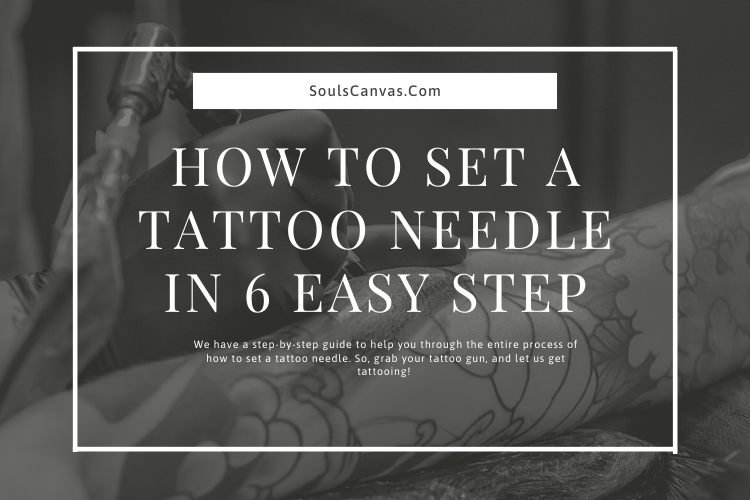You have heard about those infamous tattoo experiences gone wrong. It is only natural for you to wonder about the level of pain to expect if needles scare you. After months of contemplation, you have finally decided to go for it. So, here is everything you need to know about how tattoo needles work!
How deep do tattoo needles penetrate
Getting a tattoo for the first time can be a big commitment. Just like any other commitment, it is okay for you to be a little worried about this permanent artwork on your body. Getting inked requires immense precision and skill on the tattoo artist’s part. We want to make sure that you are in for a stress-free and enjoyable experience.
1/16th of an inch deep: That is how deep it goes
Dyes are inserted into your skin using a tattoo needle. It should ideally penetrate the first three layers on your skin, which measure up to be 1/16th of an inch deep. An experienced tattoo artist knows how to handle his needle. Too deep and the needle will damage the flesh, too shallow, and the tattoo will not remain permanent for long. So, penetrating just the right depth is crucial.
The skin has a total of 3 layers:
- Epidermis: It acts as a protective barrier and is comprises of 5 sub-layers.
- Dermal layer: It contains hair follicles and blood vessels.
- Subcutaneous layer: It attaches the dermal layer to the bones and muscles and is the topmost fatty layer.
How do tattoo machines work?
There is a major difference in the methods that artists use to make tattoos. Also, the types of tattoos differ a lot in comparison to the modern techniques that the artists use today. A lot has changed since traditional tattoo techniques were implemented.
Evidence of tattoos dating back to ancient times
Tattoos have been around for centuries. There is solid evidence for a huge variety of tattoo methods and designs of different cultures across the globe. Some traditional tattoo techniques like Samoan and Thia require ink for injection from a thin needle made from bamboo. These techniques can result in scarring due to inconsistency. Mummies with tattoos have also been discovered. Ötzi the Iceman is one of the most popular tattoo evidence dating back to 3100 BC.
Modern tattooing techniques
Today, a tattoo gun or machine comes in handy for any modern tattoo artist. Most tattoo parlors use these to inject colored ink at 6000 motions a minute into the skin. A skilled tattoo artist will make sure that he consistently injects the needle in about 1/16th of the skin. This finesse is required to keep the pain level to a minimum. The needle holes made with the machine will allow the vacuum to suck ink from the surface of the skin.
Video Credit – BrainStuff – HowStuffWorks
How deep is the ink injection?
No one wants their permanent tattoo to start fading after a while. A qualified tattoo artist knows how to prevent patchy artwork that can dull down as your skin layers slowly shed away. There are consequences to driving the tattoo needle too deep or too shallow or both. You are in for a short-lived tattoo if the needle is not deep enough and for extreme pain, if it’s too deep.
Here is what happens after you get a tattoo. The three layers of the skin, namely, epidermis, dermis, and subcutaneous, blend properly. The rapidly penetrating tattoo needle cuts and draws these layers together.
Epidermal layer
After you get a tattoo done, your body reacts to the ink as if it were an invader. It triggers the formation of immune cells. To avoid any allergy or infection, your body sends the white blood cells to take care of it. These white blood cells are activated to heal your body from this open wound.
Epidermal-dermal junction
The cells present in the dermal layer break down the smaller particles of ink. While this is taking place in the surface layers of your skin, the epidermal-dermal junction starts to cure. Most of the larger ink particles get trapped inside the skin as it is healed and remain in it forever.
The dermal layer
The dermis comprises of connective tissue. It is somewhere between 1mm and 2mm deep into the skin. That is how deep the tattoo needle should penetrate. The connective tissue comprises cells called fibroblasts. These are the secrets behind a tattoo’s permanency.
Once your tattoo is complete, fibroblasts get to work. These cells metabolize the tattoo ink and trap it inside themselves. The ink cannot penetrate any further due to the connective tissue. So, the ink will remain trapped below the partition separating these issues. After a certain amount of time, your artwork will heal and become permanent.
Permanency of your tattoo
Tattoo needles should be properly set, and the adjustments of the tips should also be perfect to penetrate the dermis layer. The tip should not strike out more than 2mm or less than 1 mm. The tattoo artists should do this with utmost precision so that the pain is minimal, and the tattoo lasts for long.
An excessive amount of blood indicates that the needle penetration is too deep and might cause the ink to spread erratically. If the tattoo artist fails to inject the need deep enough, your tattoo maybe not lasts long and face discoloration too.
Make sure you find a qualified tattoo artist before you invest in getting a tattoo. Give the tattoo artist a clear idea of what you want and follow their aftercare advice carefully.






